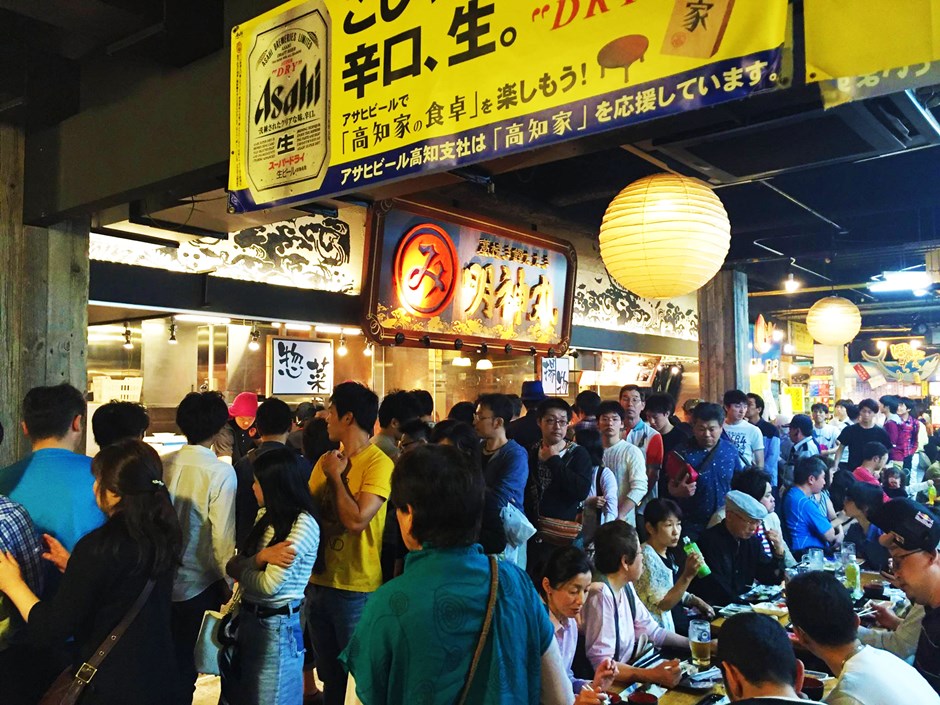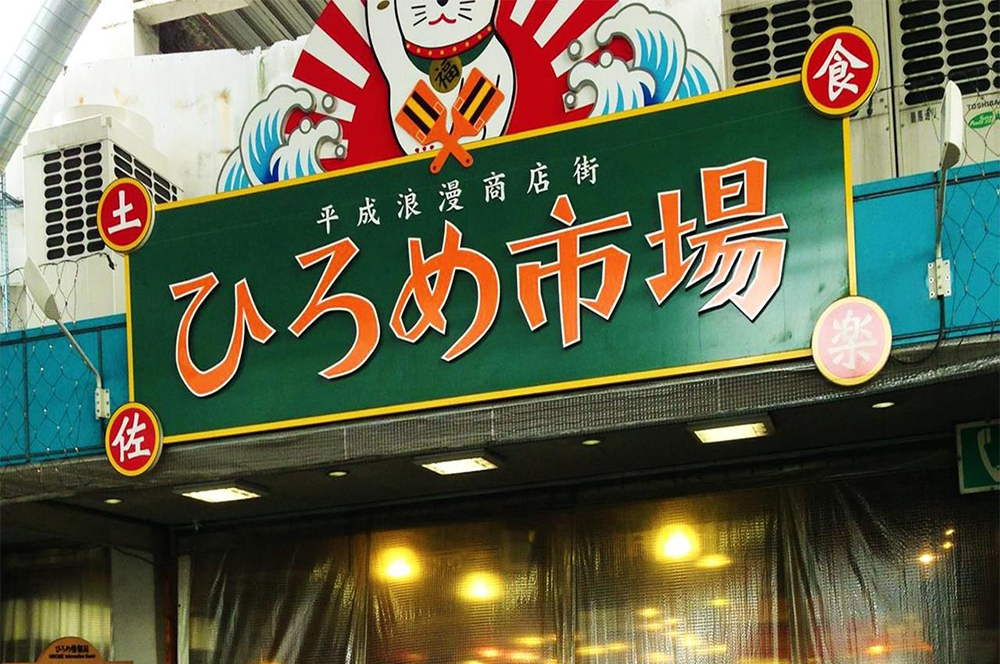Of Japan’s four main islands, Shikoku is the smallest. Most people from the other three would also say it is the strangest, the one least like the rest of the modern country. With no volcanoes or even a bullet train, the city folk in Osaka, Kyoto and Tokyo say it’s a bit backward, not really Japan at all. The first time I didn’t see it, but after my second, third and fourth trips there, I could see there was some truth in it. And by the time I got to visit Kochi, the largest prefecture on Shikoku, I was not at all surprised to find it was the home of the boisterous, bonkers Hirome Market.

Elsewhere in the country, there’s the rigid formality of mealtimes — the bowing, never pouring your own drink, guessing at menus with little English. … All of that disappears in Hirome, where diners sit at communal tables, drinking, eating and smoking with gusto. Often they are laughing. There is noticeably more shouting and less bowing. The buzz and vitality make it quite unlike anywhere else in the country. “There’s a cheerful and buoyant mood,” says the market’s manager Mr. Ozaki through a translator. “A chaotic condition where anything goes.”
ALL OF IT GOES WELL WITH BEER.
The atmosphere is clearly important inside Hirome, but that wouldn’t count for much if the food wasn’t also outstanding. Much of what’s served inside is essentially Japanese street food, taken indoors. The two dozen stalls inside tend to sell just one or two specialties each. All of it goes well with beer. If, like me, you don’t speak any Japanese, that’s fine too — you can just point at what you want and smile. You’ll be smiling a lot more once you’ve tried it. I’m quite sure I could conquer entire nations if I knew the Hirome recipe for takoyaki, dough balls the size of golf balls, each containing a small chunk of octopus, then coated in a sweet and salty sauce.
And all that’s fine and lovely, but not unique. For that, you need to order the katsuo no tataki. No one can tell me why, but that particular dish (charred bonito) is done better here than anywhere else in the world. Chefs can be seen with huge slabs of fish, burning the red flesh over intense fires, flames almost licking the ceiling. “It is fun to see the chefs’ performance of searing katsuo by making fire with rice straw in front of diners,” says Ozaki-san. “Usually a chef does it in a kitchen and not out in the open.” The dish is served with some sea salt and a vinegared soy or ponzu sauce. Japanese order it from across the country, but even with same-day delivery, nothing matches having it seconds after it’s removed from the fire.
Down in this part of the country, the summers can be unbearably humid, while conversely, the winters are long and deep. Autumn perhaps represents the best time to visit — especially when the harvests of yuzu come in and the Sunday food market outside gives visitors the chance to buy many of the ingredients that are so expertly used inside Hirome. But the market is open every day — and the bonito is always flaming good.
GO THERE: HIROME MARKET
Directions: Everyone in Kochi City knows Hirome Market — simply say “he-roam-ay” and people will point you in the right direction. It’s about a mile southwest of Kochi’s main train station.
Prices: A set meal of charred bonito is $12 for 10 pieces. Elsewhere, ramen is around $5 and draft beers are $4.50.
Pro Tip: If you’re looking for a break from eating, the spectacular Kochi Castle is next door. It’s one of just 12 original castles not destroyed either by natural disaster or the World War II.

